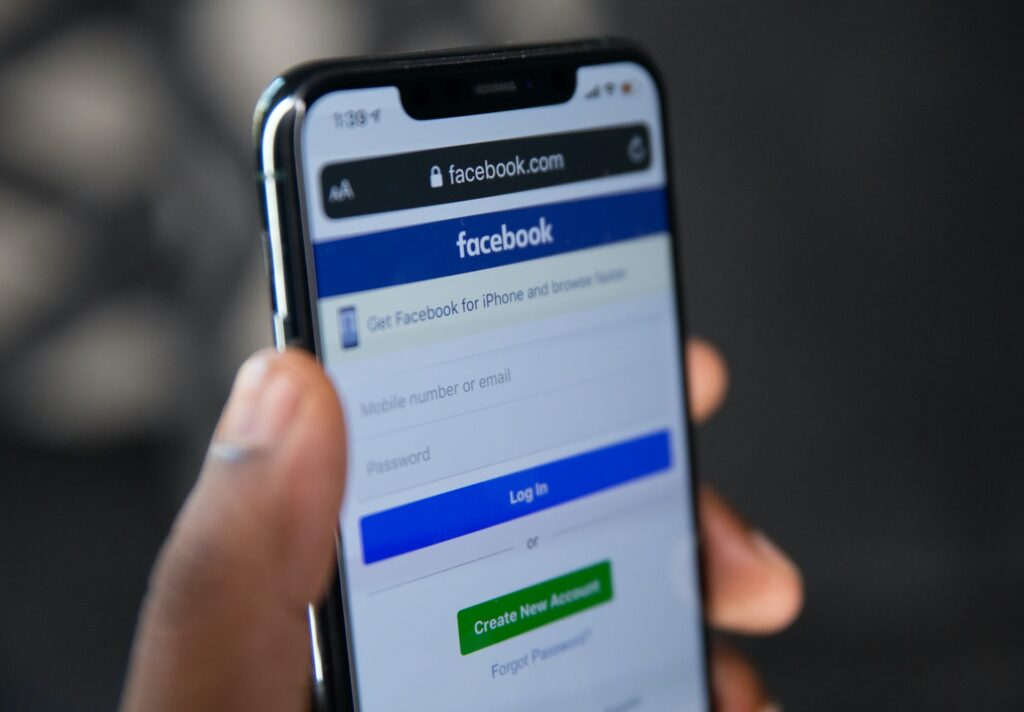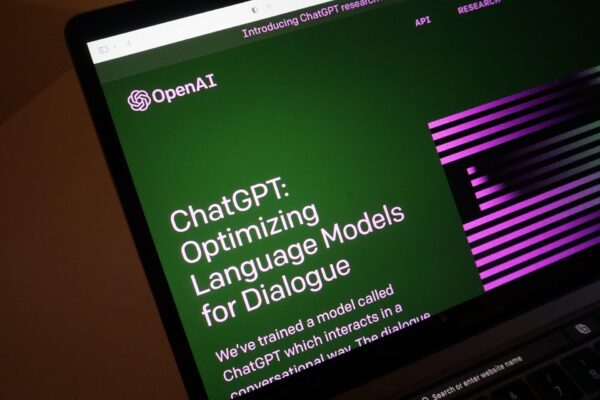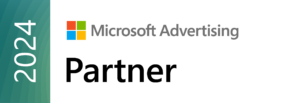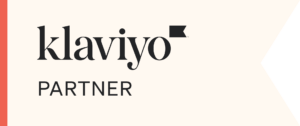Facebook advertising has become an essential tool for businesses looking to connect with their target audiences. With more than 2.8 billion monthly active users, Facebook offers businesses an unparalleled opportunity to reach their target audience with customized ads. However, just like any other advertising platform, Facebook ads are affected by seasonality, particularly during the holiday season. In this blog post, we’ll take a look at a comparison of different Facebook ad metrics during the holiday season versus after the holidays to see if ad competition during the holiday season is a real thing or if it’s a myth.
Seasonality of Facebook Ads
Seasonality is a term used to describe fluctuations in demand or supply based on the time of year. This is particularly true for businesses that sell seasonal products, such as winter coats or swimsuits. However, even businesses that offer products or services that aren’t inherently seasonal can be affected by seasonality. This is because consumer behavior changes depending on the time of year, which can affect how they respond to ads. Some brands may think that seasonality doesn’t affect their business but it may affect every business, regardless of industry, even if it’s a small degree. During a time of such fierce competition, costs on certain products or services – in this case Facebook/Instagram ads – can go up. This not only applies to the Meta suite of products, but all online, TV, radio, and newspaper advertising platforms.
The holiday season, which spans from November to December, is the most significant season for Facebook ads. This is mainly due to not one, but two reasons. The first reason is obvious: consumer spending. The second reason is equally as important and that is business spending. In this case, marketing spend. During this time, businesses increase their ad spend to take advantage of the large increases in consumer demand for products and services. However, with increased demand comes increased competition.Which, for businesses, can drive up ad costs.
Effects of Costs and Ad Metrics Pre-Holidays
Before the holidays, Facebook (and Instagram) ad costs are relatively low, making it an excellent time for businesses to experiment with their advertising strategy. During this time, businesses can test different ad formats, targeting options, and ad creative to determine what works best for their audience. This allows them to optimize their ads for the holiday season, where the stakes are higher.
Ad metrics, such as click-through rates (CTR) and cost-per-click (CPC), can also be affected by seasonality. During the pre-holiday season, CTR tends to be higher as consumers are looking for gift ideas and deals. This can drive down CPC, making it an ideal time for businesses to acquire new customers at a lower cost.
After we noticed a very large increase in ad impressions and reach in the month of January, our team at Modern Foundation wanted to take a deeper look into this and compare metrics from the holiday season of November 15, 2022 to December 31, 2022, versus the same time span (46 days) time after the holiday season of Jan 1, 2023, to Feb 16, 2023. We also wanted to look at other metrics to see if we could find any actionable insights we could use for the following holiday season.
Figure A (shown below) is a snapshot from a client showing how we actually decreased spend after the holiday season. This is normal for a lot of different brands across a variety of industries as a lot of brands like to become more aggressive during the holiday season to compete in the aforementioned increase in both consumer and business spending. Collectively, we decreased overall spend 19.6% from 11/15/22-12/31/22 to 1/1/23-2/16/23. Now, remember this -19.6% decrease for the remainder of this blog post.
Figure A

Now Figure B (below) shows the same aforementioned timeframes but is looking at impressions delivered. We see a different trend. One would think that if we decrease the budget by 19.6% that impressions would follow that same trend. However, the overall impressions delivered increased 20.32%. Although we fully expect an increase in impressions after the holiday season, a 20+% increase or decrease in any ad metric over a 45-day period is something to pay closer attention to.
This tells us an interesting story. This confirms that ad competition during the holiday season was extremely competitive in 2022 and that Facebook and Instagram ad inventory opened up by a significant margin compared to weeks during the holiday season.
Figure B
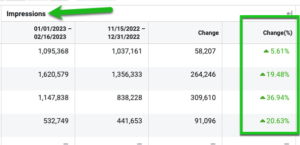
This trend is further confirmed by the Cost Per 1,000 Impressions (CPM) shown below in Figure C as well. The CPM for this particular client decreased a whopping 33.2% collectively. This confirms further that not only was the competition on the Facebook ads auction much higher during the holidays, but actually 62% higher than normal. We find this number by dividing the % that the impressions increased (20.32%) by the % that the CPM decreased (33.2%). The fact that the cost of impressions went down much faster than the amount that those same impressions increased tells us that Facebook certainly put a premium on holiday advertising in 2022.
Figure C

What does the audience targeting look like during and after the holiday season?
Figures D and E below show us both the Frequency (Fig D) and the Reach (Fig E) comparisons of holiday and post-holiday advertising.
An ad’s frequency is the amount of times a specific user sees your ad. As shown in Figure D below, the ad frequency was much higher during the holiday season and decreased 20.62% after the holidays were over. Our data shows us that we were serving ads to the same “pool” of people at a higher rate. This isn’t a good or bad thing as that depends on what the goals are for each particular client.
Figure D
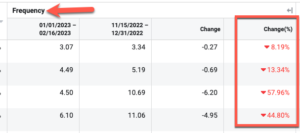
A slightly different view
Take Figures F and G below. These two figures are showing the aforementioned metrics (Frequency and Reach) but with two different views. The first being we are measuring the difference in the metrics from a whole month prior to a heavy holiday month in May (Mother’s Day and Memorial Day) that is typically heavy in advertising competition for a variety of products, services, sales, promotions, etc.
If advertising competition truly is higher during holiday seasons, we would now see the inverse as we are comparing the month prior to the actual holiday time.
Figure F (below) shows Frequency being relatively flat in the month of April compared to the month of May. This tells us that we mostly are serving ads to a particular audience the same amount of times, respectively. However, Figure G does align with what Figure E shows us above and that is that Reach is in fact throttled, at least to a small degree, during a holiday period. Although Figure E shows a very large increase in Reach after the Christmas holiday period, the month of May does show that there is also more reach outside of a holiday period.
Figure F
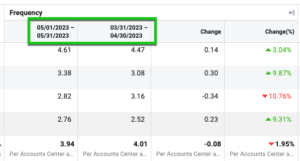
Figure G

Actionable insights
Heading into the next holiday season in 2023, we now know that Facebook, and most likely other platforms, likes to circulate ads to an existing audience rather than finding new potential customers. We can certainly still go after new potential customers but would most likely be much more expensive to do so. Knowing this, we can now craft our ad creative, copy, and budget to focus more on remarketing versus prospecting for new clients during the holiday season. After the holidays, we can shift that focus to catering more to new clients when advertising costs fall and the market is less competitive.. If Facebook sets the stage for us, we as advertisers should use what Facebook gives us to our advantage and attempt to maximize our budget as much as we possibly can during such a highly competitive time of the year.
In conclusion
The seasonality of Facebook ads is an important factor for businesses to consider when planning their advertising strategy. By understanding the effects of costs and ad metrics pre and post-holidays, businesses can optimize their ad spend and achieve better results. Whether it’s experimenting with ad formats, targeting options, or ad creative, businesses can use the pre-holiday season to test and refine their advertising strategy. Similarly, the post-holiday season provides an opportunity for businesses to engage with existing customers, promote new products, and plan for the next holiday season. By staying aware of seasonality trends, businesses can ensure that their Facebook ads remain effective and profitable all year round.
